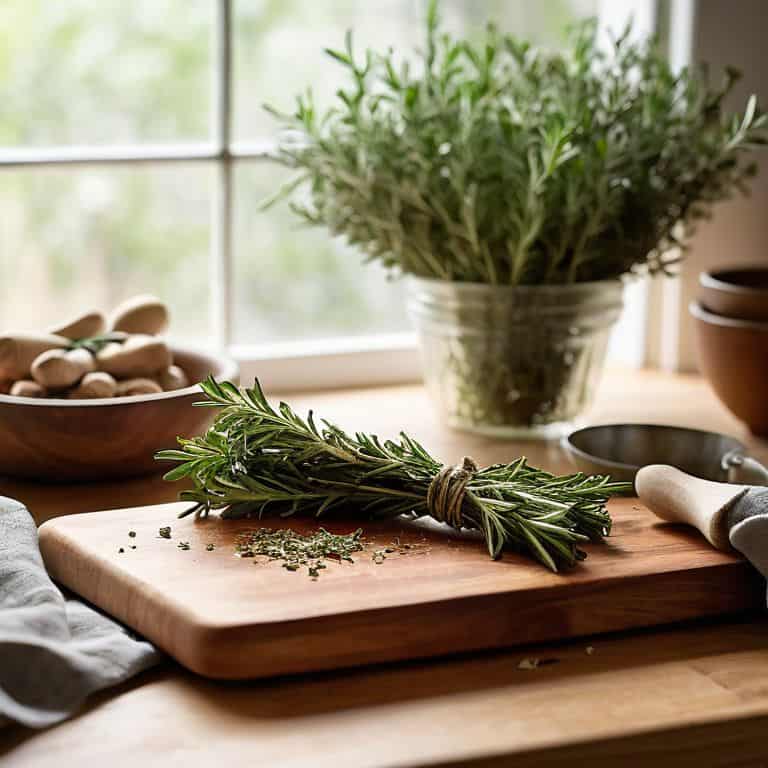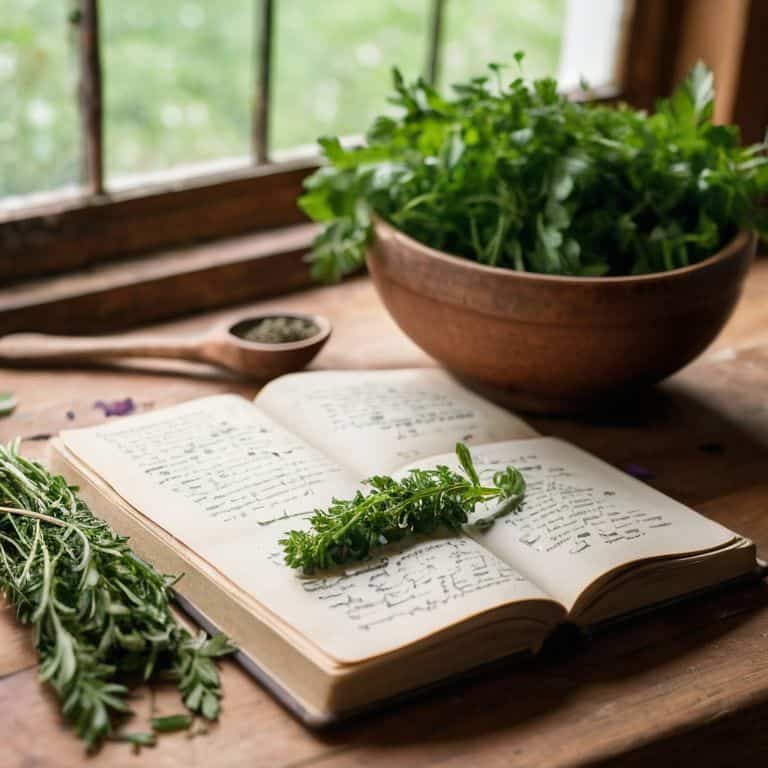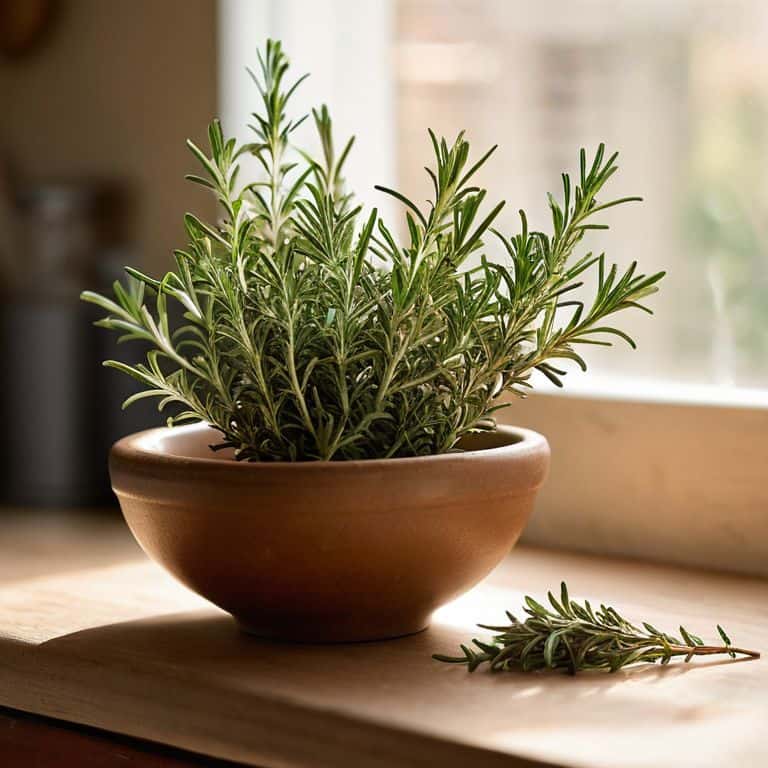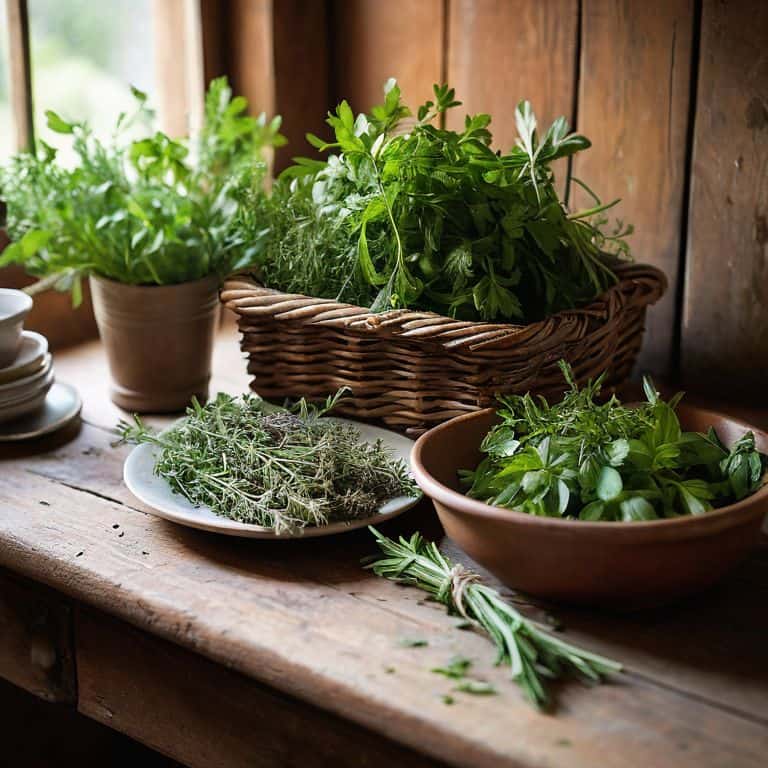As a bush pilot turned flight instructor, I’ve learned that navigating the nuances of how to know when to use fresh vs dried herbs in cooking can be just as tricky as plotting a course through treacherous airspace. I recall a particularly memorable flight over the Alaskan wilderness, where a fellow pilot’s attempt at whipping up an in-flight meal ended in disaster – all because he misjudged the potency of dried herbs. It got me thinking: what’s the real secret to choosing between fresh and dried herbs, and how can we apply a little aviation logic to simplify the process?
In this article, I’ll share my no-nonsense approach to how to know when to use fresh vs dried herbs, distilled from years of experimenting with recipes in my downtime. You can expect practical advice on how to make the most of both fresh and dried herbs, along with some clever tricks for substituting one for the other in a pinch. By the end of this guide, you’ll be equipped with the confidence to take to the skies – or rather, the kitchen – and start cooking with the same ease and precision that I teach my students to fly.
Table of Contents
- Guide Overview: What You'll Need
- Step-by-Step Instructions
- How to Know When to Use Fresh vs Dried Herbs
- Decoding Dried Herb Flavor Profiles for Optimal Cooking
- Navigating Fresh Herb Substitution in Recipes
- Charting the Best Course: 5 Essential Tips for Fresh vs Dried Herbs
- Key Takeaways for Mastering Fresh and Dried Herbs
- Navigating the Spice Route with Confidence
- Conclusion: Mastering the Art of Herb Selection
- Frequently Asked Questions
Guide Overview: What You'll Need

Total Time: 30 minutes to 1 hour
Estimated Cost: $10 – $20
Difficulty Level: Easy
Tools Required
- Measuring Spoons (for precise measurements)
- Mortar and Pestle (for crushing dried herbs)
- Herb Stripper (optional)
Supplies & Materials
- Fresh Herbs (such as basil, rosemary, thyme)
- Dried Herbs (such as oregano, sage, parsley)
- Airtight Containers (for storing dried herbs)
Step-by-Step Instructions
- 1. First, let’s start with the basics: understanding the fundamental difference between fresh and dried herbs. Fresh herbs are, well, fresh – they’re typically more potent and have a more vibrant flavor profile compared to their dried counterparts. On the other hand, dried herbs have been preserved through various methods, which helps to concentrate their flavors and extend their shelf life.
- 2. Next, consider the type of dish you’re preparing. If you’re making something like a salad, salsa, or a light, refreshing sauce, fresh herbs are usually the way to go. This is because their bright, zesty flavors won’t be overpowering, and they’ll add a nice texture to your dish. Think of it like flying a small plane – you need to be gentle and precise with your movements.
- 3. When it comes to heartier dishes like stews, braises, or roasted meats, dried herbs can be a better choice. This is because the long cooking times and rich flavors of these dishes can overpower fresh herbs, making them lose their potency. Dried herbs, on the other hand, can withstand the heat and will infuse your dish with a deeper, more complex flavor.
- 4. Now, let’s talk about storage and handling. If you’re using fresh herbs, make sure to store them in a cool, dry place to keep them fresh for as long as possible. You can also freeze them or make herb ice cubes to preserve them for future use. For dried herbs, it’s essential to store them in airtight containers to maintain their flavor and aroma.
- 5. The next step is to understand the flavor profiles of different herbs. For example, basil and mint are bright and refreshing, while thyme and rosemary are earthier and more robust. Knowing the flavor profile of each herb will help you decide whether to use fresh or dried herbs in your dish. Think of it like navigating through different weather conditions – you need to understand the terrain to make the right decisions.
- 6. When substituting fresh herbs with dried herbs, remember the 1:3 ratio: one part dried herbs is equivalent to three parts fresh herbs. This is because dried herbs are more concentrated, so you’ll need less of them to achieve the same flavor. It’s like adjusting your altitude – you need to make precise calculations to reach your destination safely.
- 7. Finally, don’t be afraid to experiment and taste as you go. The key to mastering the use of fresh and dried herbs is to understand how they interact with different ingredients and cooking methods. So, go ahead and try new combinations – it’s like flying through uncharted territory, and you never know what amazing flavors you might discover.
How to Know When to Use Fresh vs Dried Herbs

When it comes to navigating the world of herbs, understanding the nuances of fresh herb substitution in recipes is crucial. This is where the art of flight comes in – think of your recipe as a flight plan, and the herbs as your navigation tools. Just as a skilled pilot adjusts their route according to weather conditions, a skilled cook must adjust their herb usage based on the dish’s requirements.
In the context of cooking with mixed herbs, it’s essential to consider the overall dried herb flavor profile. Dried herbs tend to have a more concentrated flavor, so a little goes a long way. On the other hand, fresh herbs add a bright, freshness to dishes that’s hard to replicate with dried herbs. By understanding these differences, you can make informed decisions about which herbs to use and when.
As you experiment with different herbs, remember to consider herb storage and preservation. Properly storing your herbs can help maintain their flavor and aroma, ensuring that your dishes turn out as intended. Whether you’re using fresh or dried herbs, the key is to find a balance that works for you and your recipe. By mastering this balance, you’ll be well on your way to creating delicious, memorable meals that showcase the best of what herbs have to offer.
Decoding Dried Herb Flavor Profiles for Optimal Cooking
When working with dried herbs, it’s essential to understand their unique flavor profiles. Unlike fresh herbs, dried herbs are more concentrated, so a little goes a long way. Think of it like navigating through turbulence – you need to make subtle adjustments to stay on course. For example, dried oregano has a pungent, earthy flavor, while dried thyme has a more delicate, slightly minty taste. By recognizing these flavor profiles, you can make informed decisions about which herbs to use in your recipes.
Just like plotting a flight plan, you need to consider the destination – in this case, the dish you’re creating. Dried herbs like rosemary and sage are perfect for hearty, slow-cooked meals, while dried basil and parsley are better suited for lighter, brighter flavors. By decoding these flavor profiles, you’ll be able to create harmonious, delicious dishes that showcase the best of what dried herbs have to offer.
Navigating Fresh Herb Substitution in Recipes
When substituting fresh herbs in a recipe, it’s essential to consider the flavor profile and texture. As a rule of thumb, use three times the amount of fresh herbs as you would dried. However, this ratio can vary depending on the herb and desired intensity. For delicate herbs like basil or parsley, you may want to start with a smaller ratio and adjust to taste. On the other hand, heartier herbs like rosemary or thyme can handle a more substantial substitution.
Think of it like adjusting your flight plan – you need to consider the conditions and make adjustments on the fly. In this case, the conditions are the type of herb and the desired flavor outcome. By making informed substitutions, you can ensure your dish takes off in the right direction.
Charting the Best Course: 5 Essential Tips for Fresh vs Dried Herbs

- Let your recipe be your guide: If a dish requires a bright, fresh flavor, like in salads or salsas, reach for the fresh herbs to add that instant zing
- Consider the cooking time: Dried herbs can withstand long cooking times and even gain depth, whereas fresh herbs are best added towards the end to preserve their flavor and aroma
- Understand the herb’s natural flavor profile: Certain herbs like thyme and rosemary have robust flavors that hold up well when dried, while others like basil and cilantro are more delicate and often preferred fresh
- Think about the texture you want to achieve: Fresh herbs can add a lovely freshness and texture to dishes, while dried herbs blend in seamlessly, making them ideal for sauces and marinades
- Experiment and trust your instincts: The choice between fresh and dried herbs ultimately comes down to personal taste, so don’t be afraid to try out different combinations to find what works best for you and your dish
Key Takeaways for Mastering Fresh and Dried Herbs
Always consider the flavor profile and texture you want to achieve in your dish when deciding between fresh and dried herbs, just as a pilot considers weather conditions before takeoff
Understand that fresh herbs are ideal for adding bright, vibrant flavors and aromas, while dried herbs provide deeper, more concentrated flavors – a distinction similar to navigating through different air traffic control zones
By mastering the substitution and flavor profiles of fresh and dried herbs, you’ll be able to create a wide range of dishes with confidence, much like a pilot landing safely after a long flight – it’s all about preparation and understanding the fundamentals
Navigating the Spice Route with Confidence
Just as a pilot must consider the winds of change when charting a course, a cook must weigh the nuances of fresh and dried herbs to navigate the flavors of a dish, and it’s in this thoughtful balance that we find the true art of cooking.
Daniel Sato
Conclusion: Mastering the Art of Herb Selection
As we conclude our journey through the world of fresh and dried herbs, it’s essential to remember the basics: understanding the flavor profiles, textures, and uses of each type of herb is crucial for making informed decisions in the kitchen. We’ve navigated the process of substituting fresh herbs in recipes and deciphered the unique characteristics of dried herb flavor profiles. By applying these principles, you’ll be well on your way to becoming a skilled chef, capable of elevating your dishes with the perfect blend of herbs. Whether you’re a seasoned cook or just starting out, practicing with different herb combinations will help you develop your own signature style.
As you continue to explore the realm of fresh and dried herbs, keep in mind that the key to unleashing your culinary creativity lies in experimentation and patience. Don’t be afraid to try new things and trust your instincts – with time and practice, you’ll develop a deep understanding of how to balance and blend herbs to create truly unforgettable dishes. So, go ahead, take to the skies, and chart your own course through the world of flavors, remembering that the art of cooking is a journey, not a destination.
Frequently Asked Questions
What are the general guidelines for substituting dried herbs for fresh herbs in recipes without compromising flavor?
When substituting dried herbs for fresh, a good rule of thumb is to use about one-third to one-quarter the amount called for in the recipe. This is because dried herbs are more potent than fresh ones, so a little goes a long way. Think of it like adjusting your altitude – small changes can make a big difference.
How do I determine the optimal ratio of fresh to dried herbs when converting a recipe?
To determine the optimal ratio, think of it like adjusting altimeter settings – a general rule of thumb is to use one-third to one-quarter the amount of dried herbs as you would fresh. For example, if a recipe calls for 3 tablespoons of fresh rosemary, you’d use about 1 tablespoon of dried rosemary.
Are there any specific herbs that are better suited for drying than others, and how does that impact their usage in cooking?
When it comes to drying, some herbs are more cooperative than others. I think of it like flying in different weather conditions – you need to know your aircraft’s limitations. Herbs like thyme, rosemary, and oregano tend to retain their flavor and aroma well when dried, while basil and cilantro are more delicate and often better used fresh.
